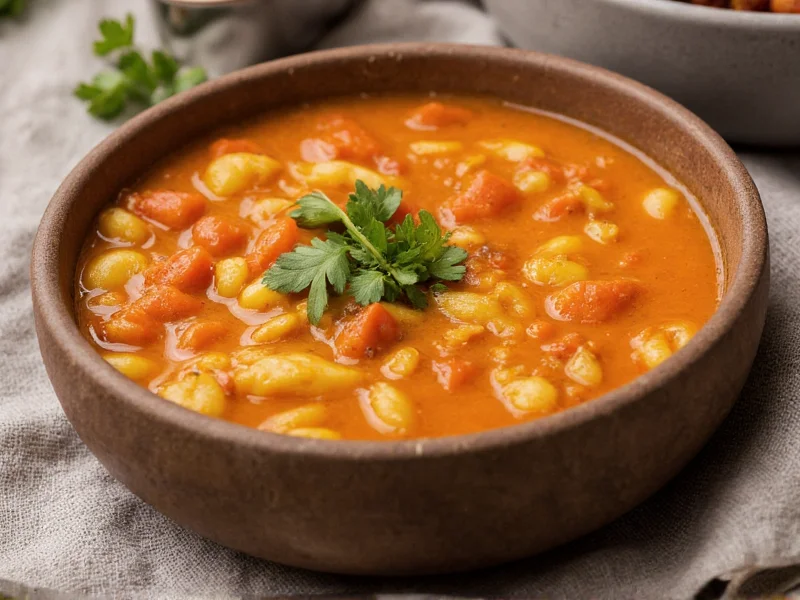Understanding the Culinary Definition of Soup
At its core, soup represents one of humanity’s oldest prepared foods, with archaeological evidence suggesting soup-making dates back approximately 20,000 years. The fundamental characteristic that distinguishes soup from other food preparations is its liquid base, which serves as the primary vehicle for flavors and ingredients.
Soups generally fall into two main categories:
| Type | Characteristics | Examples |
|---|---|---|
| Clear Soups | Transparent broth with visible ingredients | Consommé, bouillon, Asian broths |
| Thick Soups | Opaque texture achieved through various thickening methods | Chowders, purees, cream soups, bisques |
The distinction between soup and similar preparations like stews often comes down to liquid content. While soups typically contain 80-90% liquid, stews maintain a ratio closer to 50-60% liquid, with ingredients comprising the majority of the dish.
Etymological Journey of ‘Soup’
The linguistic evolution of ‘soup’ reveals fascinating cultural insights. Before the 18th century, ‘sop’ referred to a piece of bread soaked in liquid. The Middle English ‘soppe’ evolved from the Old French ‘soupe,’ which itself derived from the Vulgar Latin ‘suppa.’
Historically, soup functioned as both sustenance and practicality. In medieval Europe, the ‘sop’ (bread) would absorb broth during meals, then be given to the poor or servants after the main diners finished – hence the expression ‘to get the sop.’ By the 17th century, ‘soup’ had evolved to describe the liquid portion itself rather than just the bread.
Cultural Significance Across Civilizations
Soup holds remarkable cultural significance worldwide, often symbolizing comfort, healing, or community. Many cultures have signature soup traditions that reflect local ingredients and historical circumstances:
- Japanese miso soup represents harmony and balance in traditional breakfasts
- French onion soup evolved from humble peasant food to culinary icon
- Mexican pozole carries ceremonial importance dating back to Aztec rituals
- Eastern European borscht varies by region, reflecting political and cultural boundaries
Anthropologists note that nearly every culture with access to fire and containers developed some form of soup, making it one of humanity’s most universal food preparations. The phrase ‘stone soup,’ found in folktales across Europe and Asia, illustrates soup’s symbolic role in community building and resource sharing.
Figurative Meanings and Idiomatic Expressions
Beyond its culinary definition, ‘soup’ appears in numerous idiomatic expressions that reveal cultural attitudes:
- ‘In the soup’ – To be in trouble or difficulty (American English, early 20th century)
- ‘Soup up’ – To enhance or modify, particularly vehicles (1920s automotive culture)
- ‘ alphabet soup’ – Referring to confusing acronyms or abbreviations
- ‘chicken soup for the soul’ – Something emotionally comforting
These expressions demonstrate how the fundamental concept of soup – a mixture of elements combined for nourishment – has permeated language metaphorically. The transition from literal food to figurative concept began in the 19th century as industrialization changed food preparation methods.
Distinguishing Soup from Similar Preparations
Understanding the precise meaning of ‘soup’ requires distinguishing it from related culinary preparations:
- Broth – A thin, clear soup made from simmering meat or vegetables
- Stock – The foundational liquid for soups, made from bones and aromatics
- Stew – Contains larger ingredient pieces with less liquid, often thickened
- Chowder – A thick, chunky soup typically containing seafood or corn
The key differentiator remains the liquid-to-solid ratio and preparation method. True soup maintains liquid as its dominant component, while dishes like stews feature solid ingredients swimming in liquid rather than liquid containing ingredients.
Common Misunderstandings About Soup Terminology
Several common confusions surround soup terminology that deserve clarification:
Many people incorrectly use ‘broth’ and ‘stock’ interchangeably. While similar, stock contains more collagen from bones (creating gelatin when cooled), whereas broth uses more meat and is typically seasoned. The term ‘bisque’ specifically refers to a smooth, creamy soup of French origin, traditionally made from pureed shellfish.
Another frequent error involves the phrase ‘gazpacho soup.’ Since gazpacho is inherently a soup (a cold Spanish tomato-based preparation), adding ‘soup’ creates redundancy, similar to saying ‘soup soup.’











 浙公网安备
33010002000092号
浙公网安备
33010002000092号 浙B2-20120091-4
浙B2-20120091-4